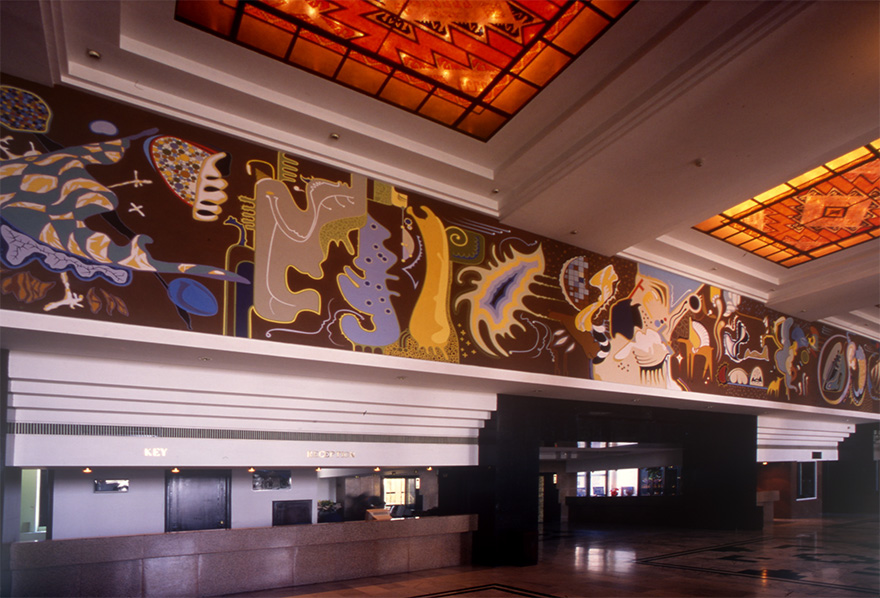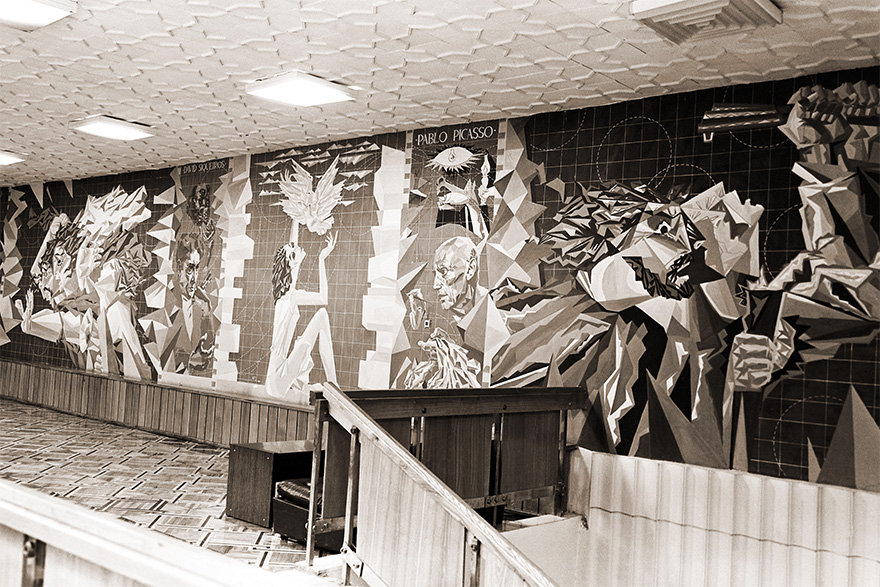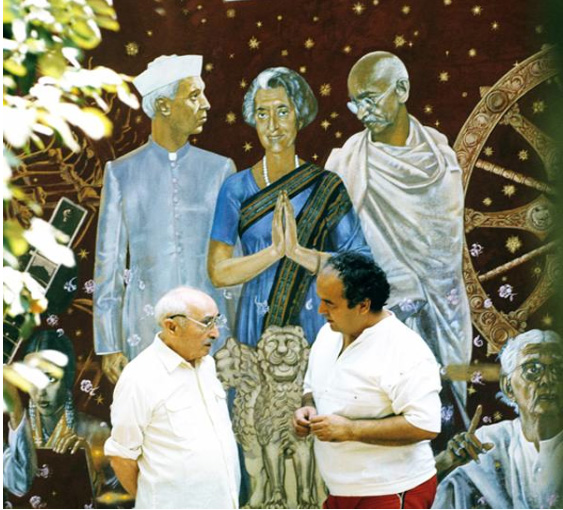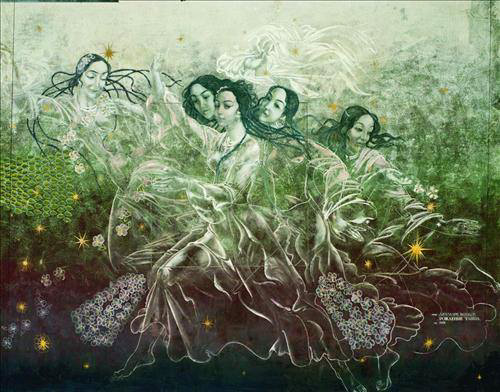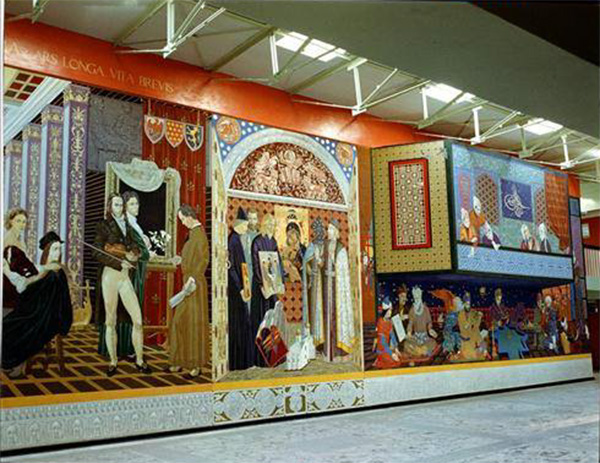 home
about
artists
exhibitions press
contact
purchase
home
about
artists
exhibitions press
contact
purchase |
|
|
BAKHODIR JALAL Biography
The artistic intelligentsia at that time was rethinking the Russian avant-garde's aesthetic methodologies, contemplating its future and experimenting with new, synthetic art practices. Art makers were looking for new ideas and forms that challenged officially sponsored and supported trends. At the end of sixties and during the seventies, examples of non-official Soviet art as well as Western modernist art masterpieces from Shchukin and Morozov’s collections became available for study, informing the younger artists about how to take their art onwards. Even the personal exhibition of Marc Chagall took place at the Tretyakov Gallery in 1975. The political changes in the Soviet society allowed information to be circulated on the latest tendencies in Western art. New generation of abstract painters started to appear in USSR by the late sixties. The discoveries made by Jalal during his student years in St. Petersburg became his points of reference, anchor, inspiration and are palpable in his later abstract works. Furthermore, the political changes of that decade gave him a freedom of expression to further unfold his artistic vision in abstract. Bakhodir Jalal graduated in 1974 with Honours from the Department of Monumental and Decorative Painting. Over a period of time, he became the most renowned muralist in his native Uzbekistan for the distinct style in which he created his pieces. He received the highest awards for reinvigoration the mural genre, winning the USSR State Prize in 1984 and the Uzbekistan State Prize in 1991. In terms of style, his monumental murals draw from disparate sources such as Renaissance art, European modern masters, Mexican muralists and frescoes of the ancient site of Afrasiab in Samarkand. He has handled the themes of “Harvest”, “Genesis of Dance” and “Chronicles of Uzbek national theatre” appropriate to the characteristics and scale of his art form. Those murals were a government-funded form of public art – specifically, large scale wall paintings in civic buildings that stand in sharp contrast to personal pieces and paintings he creates in other outlets of his creativity. Abstraction for Jalal means freedom of choice - where he can use colour and the symbolic language of lines and fluid forms to enquire into abstract art. The principles of Jalal’s abstraction follow in the path of the Malevitchian pursuit of a ‘non-objective’ painting. On another hand, his visual language is rooted locally within Central Asia and gets its inspiration in a form of Oriental mysticism which cast the material world as an illusory fiction. Jalal’s art in this field takes two forms – first as ‘abstract’ art, whose starting point is a recognizable image which is progressively abstracted to a necessary minimum and ‘concrete’ form, which stems solely from the mind of the artist or the process of creation. Paintings like “A Dialogue”, “Minaret of Timur” and “Khiva” are on the cusp between abstraction and the semi-figurative. The relativity of abstractness is very prominent in the rich and sumptuous work “Poet and his Muse”, where the imagery is drawn from the artist’s personal symbolic lexicon and is masterfully combined with traditional symbols and styles of miniature iconography. At the centre of this composition are two figures: a nude muse and a reclining poet who gazes away and up to the skies where he searches for divine inspiration. “Poet and his Muse” carries within its fluid forms and sumptuous colouring a feeling of fusion: of different traditions and beliefs, of different themes and different places. In his ‘concrete’ phase of pure abstraction, the artist builds the structures of visual metaphors needed to communicate all the complexity of the lived experience. He removes anything that might distract the viewer from focusing on the eternal now of the present. “The Radiant”, “Phoenix”, “Life Cycle” are based around the perception of the diversity of shape, colour and tone which inhabit these sophisticated works. Jalal’s abstracts are vibrant surges of energy and expressionistic – almost astrological figurations, evoking a sense of freedom, eroticism and mystery. There is a mystery about these paintings that ought to remind us they are messengers from elsewhere. The viewer can’t stop imagining contexts, motifs and can’t help but look for clues as to how they are configured. Abstract works by Jalal allowed him boldly express himself through this medium and an underlying thread of reflection of his multiple philosophical searches connects all his paintings. Jalal is collected by renowned international institutions, including the British Museum, Modern Art Museum, Moscow, State Tretyakov Gallery, Russian Federation, Union of Artists, Moscow, National Gallery of Uzbekistan, Art collections of Buckingham Palace and many private collections. Selected solo shows for the artist include 3rd Moscow Biennale of Contemporary Art, solo show in Academy of Fine Arts of Uzbekistan, Roularta Media Group in Belgium, Sackville Gallery in London. He is also a respected academician. He taught at National Arts and Design Institute named after K. Bekhzad as professor from 1975 – 1997, a position he held for nearly two decades. He was appointed as a full-time professor to teach at the Keimyung University, Korea in 2012 – 2013.
Education
Selected Exhibitions
Selected Collections:
Bakhodir Jalal Press Release Andakulova Gallery (previously Alif Art Gallery) is delighted to announce and invite you to a solo exhibition of the celebrated artist Bakhodir Jalal (Uzbekistan) called "Zoetic".The gallery will present a selection of his abstract works from the last two decades, which represents an important milestone in his career, considered a living legend in his country. The opening takes place on 2 nd of March 2016, at 7 pm. The exhibition will be on view until 14th of May 2016."Zoetic" takes its title from a rarely used word of Greek origin. To describe someone as "zoetic" is to suggest he contains a vitality that makes life whole, contributing to its deeper meaning. It refers to a person who touches on the very essence of the human experience, beyond the bare, basic motions of life. Jalal's exhibition will explore these passionate characteristics of this artist whose extraordinary career spans several decades.This survey of the artist is an opportunity to understand some of the key artworks and to contextualize and reflect on his creative journey. For Jalal, it could serve as a moment of reassessment and a point of departure for future exploration. He was born in 1948 in Tashkent the capital of Uzbekistan . From 1968 to 1974, he studied at the St. Petersburg's Repin Institute of Painting, one of the oldest and most respected art institutions in Russia. He was in St. Petersburg during the aftermath of the famous Thaw of the sixties, that initiated the transformation of Soviet society.The artistic intelligentsia at that time was rethinking the Russian avant-garde's aesthetic methodologies, contemplating its future and experimenting with new, synthetic art practices. Art makers were looking for new ideas and forms that challenged officially sponsored and supported trends. At the end of sixties and during the seventies, examples of non-official Soviet art as well as Western modernist art masterpieces from Shchukin and Morozov's collections became available for study, informing the younger artists about how to take their art onwards. Even the personal exhibition of Marc Chagall took place at the Tretyakov Gallery in 1975. The political changes in the Soviet society allowed information to be circulated on the latest tendencies in Western art. New generation of abstract painters started to appear in USSR by the late sixties. The discoveries made by Jalal during his student years in St. Petersburg became his points of reference, anchor, inspiration and are palpable in his later abstract works. Furthermore, the political changes of that decade gave him a freedom of expression to further unfold his artistic vision in abstract. Bakhodir Jalal graduated in 1974 with Honors from the Department of Monumental and Decorative Painting. Over a period of time, he became the most renowned muralist in his native Uzbekistan for the distinct style in which he created his pieces. He received the highest awards for reinvigoration the mural genre, winning the USSR State Prize in 1984 and the Uzbekistan State Prize in 1991. In terms of style, his monumental murals draw from disparate sources such as Renaissance art, European modern masters, Mexican muralists and frescoes of the ancient site of Afrasiab in Samarkand. He has handled the themes of "Harvest", "Genesis of Dance" and "Chronicles of Uzbek national theatre" appropriate to the characteristics and scale of his art form. Those murals were a government-funded form of public art - specifically, large scale wall paintings in civic buildings that stand in sharp contrast to personal pieces and paintings he creates in other outlets of his creativity.The works presented at the "Zoetic" exhibition are driven by the desire of the artist to experiment, play, break boundaries and to move away from having to paint something that is real or representative. Abstraction for Jalal means freedom of choice - where he can use colour and the symbolic language of lines and fluid forms to enquire into abstract art. The principles of Jalal's abstraction follow in the path of the Malevitchian pursuit of a non-objective painting.On another hand, his visual language is rooted locally within Central Asia and gets its inspiration in a form of Oriental mysticism which cast the material world as an illusory fiction. Jalal's art in this field takes two forms abstract art, whose starting point is a recognizable image which is progressively abstracted to a necessary minimum and concrete form, which stems solely from the mind of the artist or the process of creation. Paintings like "A dialogue", "Minaret of Timur" and "Khiva" are on the cusp between abstraction and the semi-figurative. The relativity of abstractness is very prominent in the rich and sumptuous work "Poet and his Muse", where the imagery is drawn from the artist's personal symbolic lexicon and is masterfully combined with traditional symbols and styles of miniature iconography. At the centre of this composition are two figures: a nude muse and a reclining poet who gazes away and up to the skies where he searches for divine inspiration. "Poet and his Muse" carries within its fluid forms and sumptuous colouring a feeling of fusion: of different traditions and beliefs, of different themes and different places. In his 'concrete' phase of pure abstraction, the artist builds the structures of visual metaphors needed to communicate all the complexity of the lived experience. He removes anything that might distract the viewer from focusing on the eternal now of the present. "The Radiant", "Phoenix", "Life Cycle" are based around the perception of the diversity of shape, colour and tone which inhabit these sophisticated works.Jalal's abstracts are vibrant surges of energy and expressionistic - almost astrological figurations, evoking a sense of freedom, eroticism and mystery. There is a mystery about these paintings that ought to remind us they are messengers from elsewhere. The viewer can't stop imagining contexts, motifs and can't help but look for clues as to how they are configured. Abstract works by Jalal allowed him boldly express himself through this medium and his paintings are all connected by an underlying thread of reflection of his multiple philosophical searches. This exhibition shows us how natural abstract art is, how it confirms our experience of the world and how simple it is to grasp when ones eyes are open. "Nothing can be more abstract, more unreal, than what we actually see Matter exists, of course, but has no intrinsic meaning of its own, such as meanings that we attach to it." (Giorgio Morandi, Italian painter and printmaker). Jalal is collected by renowned international institutions, including the British Museum, Modern Art Museum, Moscow, State Tretyakov Gallery, Russian Federation, Union of Artists, Moscow, National Gallery of Uzbekistan, Art collections of Buckingham Palace and many private collections. Selected solo shows for the artist include 3 rd Moscow Biennale of Contemporary Art, solo show in Academy of Fine Arts of Uzbekistan, Roularta Media Group in Belgium, Sackville Gallery in London.He is also a respected academician. He taught at National Arts and Design Institute named after K. Bekhzad as professor from 1975 - 1997, a position he held for nearly two decades. He was appointed as a full-time professor to teach at the Keimyung University, Korea in 2012 - 2013.Monumental Works by Bakhodir Jalal
|
|
|
|
E-mail: info@hayhillgallery.com |
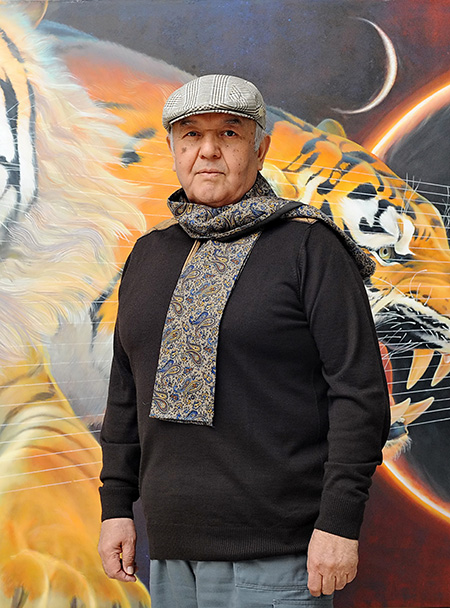 Bakhodir Jalal was born in 1948 in Tashkent
the capital of Uzbekistan
Bakhodir Jalal was born in 1948 in Tashkent
the capital of Uzbekistan BAKHODIR JALAL
BAKHODIR JALAL
